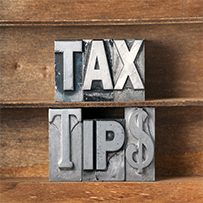Employees often give a little extra in their jobs. If that giving is literal, you paid some work-related costs and weren’t reimbursed, so you may be able to turn your professional dedication into a tax break.
Itemization required
Many unreimbursed employee expenses can be counted as miscellaneous deductions if you itemize on Schedule A.
The only problem is that these deductions don’t do you any good until they come to more than 2 percent of your adjusted gross income, or AGI. That means a worker with an AGI of $30,000 must have expenses of more than $600 before the expenses are deductible.
And even then, only the amount over $600 counts.
Work-related expenses to consider
While the percentage requirement may seem out of reach, there are many costs that workers overlook when totaling their business expenditures. Employee-paid expenses the Internal Revenue Service allows you to consider toward the 2 percent limit are below.
- Depreciation on a computer required to do your job.
- Dues to chambers of commerce, professional societies and unions.
- Education that is employment-related.
- Home office or part of your home used regularly and exclusively in your work.
- Job-search expenses in your present occupation.
- Legal fees related to doing or keeping your job.
- Licenses and regulatory fees as well as occupational taxes.
- Malpractice insurance premiums.
- Medical examinations required by an employer.
- Passport for a business trip.
- Subscriptions to professional journals and trade magazines related to your work.
- Tools and supplies used in your work.
- Travel, transportation, entertainment and gift expenses related to your work.
- Work clothes and uniforms, and their upkeep costs.
Meeting IRS work-related guidelines
Of course, the IRS has some ground rules when it comes to determining precisely whether these unreimbursed costs can be counted.
Your expenses must have been required for you to carry out the job for which you were hired and must be what the IRS calls “ordinary and necessary.” This means the item or service is common and accepted in your line of work and is appropriate and helpful to your job.
And while you’ll get no argument that making it to your office is an ordinary and necessary activity all employees face, you can’t write off the cost of getting there. For most of us working stiffs, unreimbursed commuting expenses, either by car or mass transit, generally aren’t tax-deductible — not even if you’re conducting business via your hands-free cellphone in transit.
The IRS also puts additional limits on items within allowable expense categories. For example, although professional memberships generally are allowed, the IRS will reject dues you pay to a group whose main purpose is to provide entertainment activities for members and their guests. Similarly, dues to airline, hotel and luncheon clubs are not deductible.
Work clothing also has certain standards to meet before the IRS will allow it as a deduction. And there are additional limits on travel, meal and entertainment expenses.
The total of your unreimbursed employee expenses is entered on line 21 of Schedule A. Usually, you’ll need to detail your expenses on either Form 2106, Employee Business Expenses, or Form 2106-EZ, Unreimbursed Employee Business Expenses. To count the depreciated costs of any equipment used in your job, you’ll also need Form 4562, Depreciation and Amortization. And as always, when it comes to tax deductions, good record keeping is a must.
But don’t let these additional forms or the time-consuming task of receipt-gathering scare you off. The extra effort could be worth it if your unreimbursed employee expenses help you cut your total tax bill.
For more information on Unreimbursed Employee Expenses, view Pub 529

